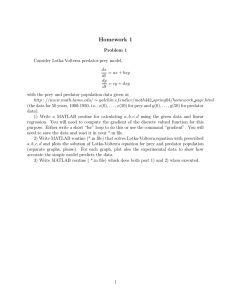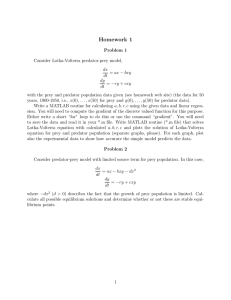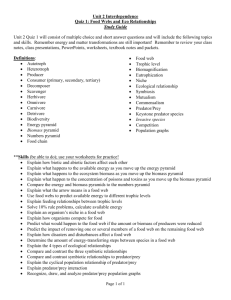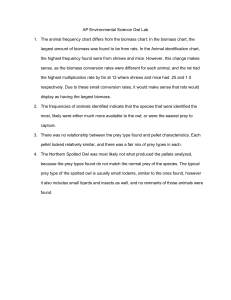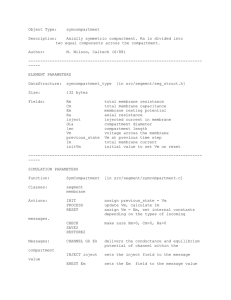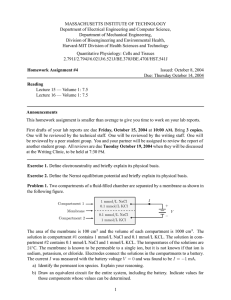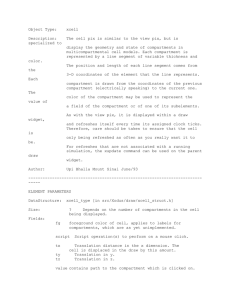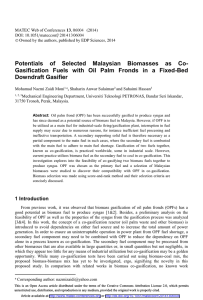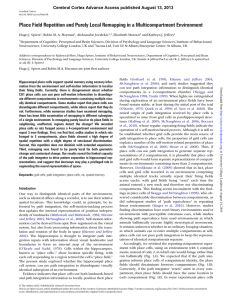1.020 Ecology II: Engineering for Sustainability MIT OpenCourseWare Spring 2008
advertisement
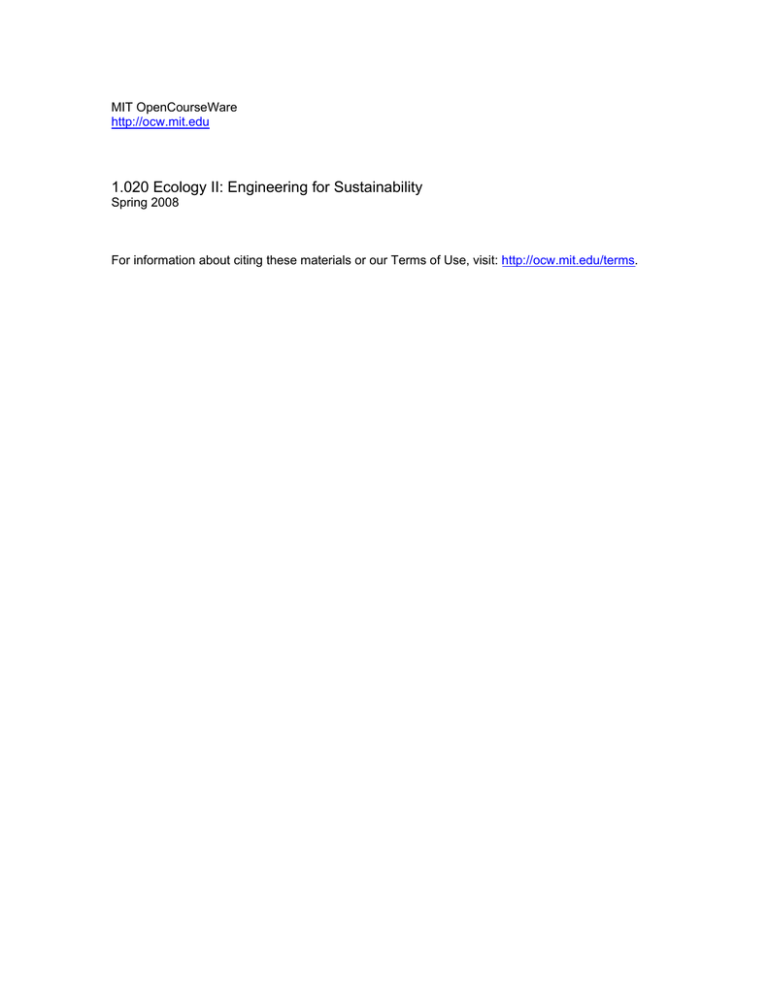
MIT OpenCourseWare http://ocw.mit.edu 1.020 Ecology II: Engineering for Sustainability Spring 2008 For information about citing these materials or our Terms of Use, visit: http://ocw.mit.edu/terms. Lecture 08_4 Outline: Population Modeling, Pesticide Impact Motivation/Objective Develop alternative models to examine impacts of pesticide on a pest (prey) population and on a predator that feeds on the pest population. Consider implications of different model assumptions. Approach 1. Define system, compartments, fluxes. Identify unknowns (predator biomass M 1 and prey biomass M 2 ). 2. Write mass balance equation for each compartment (rate form) 3. Develop alternative expressions (models) for gain and loss terms in each compartment’s mass balance eq.. Relate these expressions to unknown biomasses. 4. For each model, specify inputs, solve the set of coupled nonlinear mass balance eqs. for the unknowns (MATLAB). 5. Examine impacts of initial conditions and other inputs that change character of time response. Concepts and Definitions: Ecosystem models are typically structured like chemical kinetics models. System compartments are populations/species, chosen for convenience Each compartment’s unknown = population/species biomass (kg dry weight, kg m-2, or kg m-3). Biomasses are not conservative: mass gains and losses need not sum to zero over all compartments. Compartment gain and loss terms selected to yield realistic growth properties, carrying capacities, etc. -- no single model is appropriate for all situations. Population (biomass balance) eqs: Lotka-Volterra predator-prey model (1=prey, 2 = predator): dM 1 dM 2 = r1 M 1 − β12 M 1 M 2 = β 21 M 1 M 2 − r2 M 2 dt dt Lotka-Volterra model with logistic growth for prey (more realistic): ⎛ M ⎞ dM 1 dM 2 = r1 M 1 ⎜⎜1 − 1 ⎟⎟ − β12 M 1 M 2 = β 21 M 1 M 2 − r2 M 2 dt K1 ⎠ dt ⎝ Holling model (more coefficients): ⎛ M ⎞ ⎛ aM 1 ⎞ dM 1 ⎟M 2 = r1 M 1 ⎜⎜1 − 1 ⎟⎟ − ⎜⎜ dt K1 ⎠ ⎝ 1 + aT1 M 1 ⎟⎠ ⎝ ⎛ dM 2 M ⎞ = r2 M 2 ⎜⎜1 − 2 ⎟⎟ dt ⎝ kM 1 ⎠ Model results: Note equilibria, oscillations, sensitivity to coefficients in gain/loss terms
